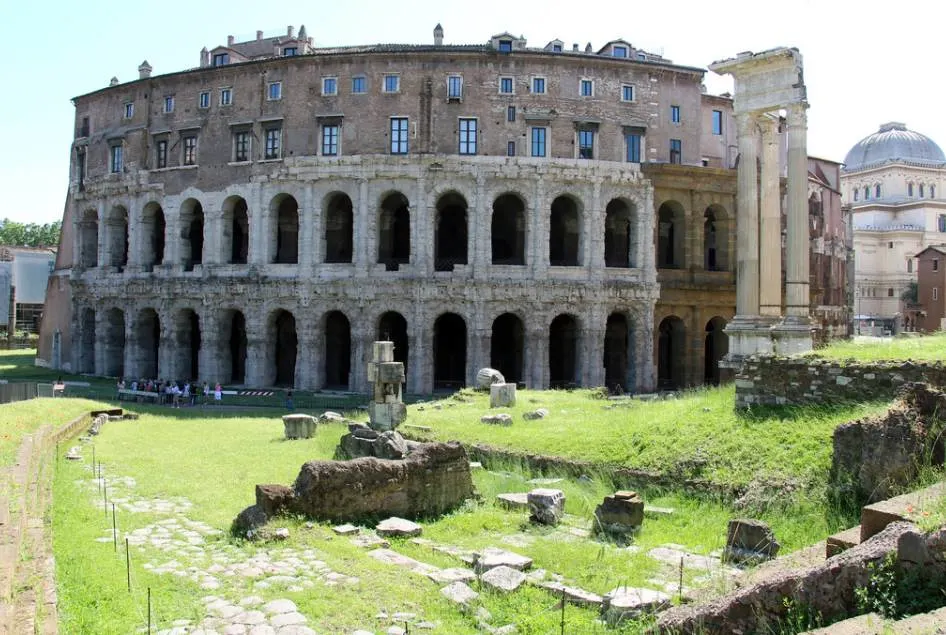There are very few places in the world where you can come across a structure that was inaugurated by First Roman Emperor Augustus.
That’s just one of the fascinating stories that this open-air theatre in the heart of the Italian capital has to tell.
The city of Rome is full of surprises and is home to some of the most amazing landmarks in the world, and this remarkable ancient theater venue is one of them.
In this article, you’ll discover some of the most interesting facts about the Theatre of Marcellus, one of Rome’s most fascinating buildings.
1. It’s located just west of the Roman Forum in central Rome
The Theatre of Marcellus is one of the many ancient buildings in Rome. It was one of the most popular entertainment venues in the ancient city for multiple centuries.
It’s located just a few hundred meters west of the Roman Forum as it faces the western flank of Capitoline Hill.
This hill is dominated by Michelangelo’s Campidoglio Square and overlooks the ancient marketplace which was one of the most important places in the city.
On the opposite side, you can find the Tiber River and Tiber Island, the only river island in the city of Rome. In ancient times, the theatre provided amazing views of this natural landmark.

2. The theater was completed during the first years of the Roman Empire
This former open-air theater has a history that goes back 2,000 years. It was commissioned by Julius Caesar (100-44 B.C.) during the dying days of the Roman Republic.

Caesar played a major role in the events that led up to the establishment of the Roman Empire, something that was completed by his great-nephew Augustus in 27 B.C.
The area was cleared on the orders of Julius Caesar but he didn’t see the construction of the theater as he was murdered before the first stone was laid.
The Secular Games were revived by Augustus in 17 B.C. and the theatre’s construction was advanced enough for it to be used for this event.
It was finally completed in 13 B.C. and officially inaugurated by Emperor Augustus himself a year later in 12 B.C.
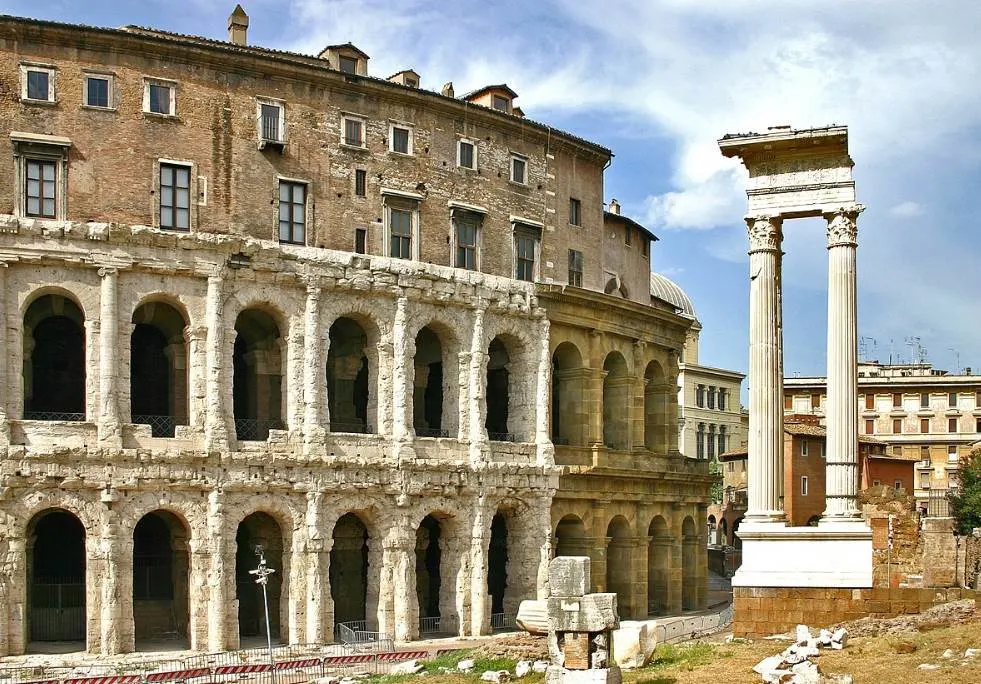
3. It was named in honor of the nephew of Roman Emperor Augustus
So why is it called the Theatre of Marcellus anyway?
Augustus inaugurated the place and named it after his nephew Marcus Claudius Marcellus (42–23 B.C.), his closest relative and therefore his heir.
Marcellus died in 23 B.C. due to a fast-spreading virus that almost provided fatal for Augustus as well. The emperor recovered but his heir died that year.
Remarkably, he was the first who had his ashes put inside the Mausoleum of Augustus, another popular landmark in Rome that still stands today.

4. The immense theater could seat nearly 20,000 spectators
The Romans didn’t mess around when it came to the size of the buildings they constructed. This is emphasized by the Amphitheaters, Temples, and Bathhouses they constructed all around the Empire.
The same applied to the Theatre of Marcellus, a structure that was completed a century before the Colosseum in Rome was erected.
The theater features 3 stories, had a diameter of 111 meters (364 feet), and could seat anywhere between 11,000 and 20,000 spectators.
According to a source dating back to the late 4th century, the theater could seat 17,580 people. Granted, the comfort of these seats was nothing compared to modern-day stadiums, but it’s still pretty impressive.
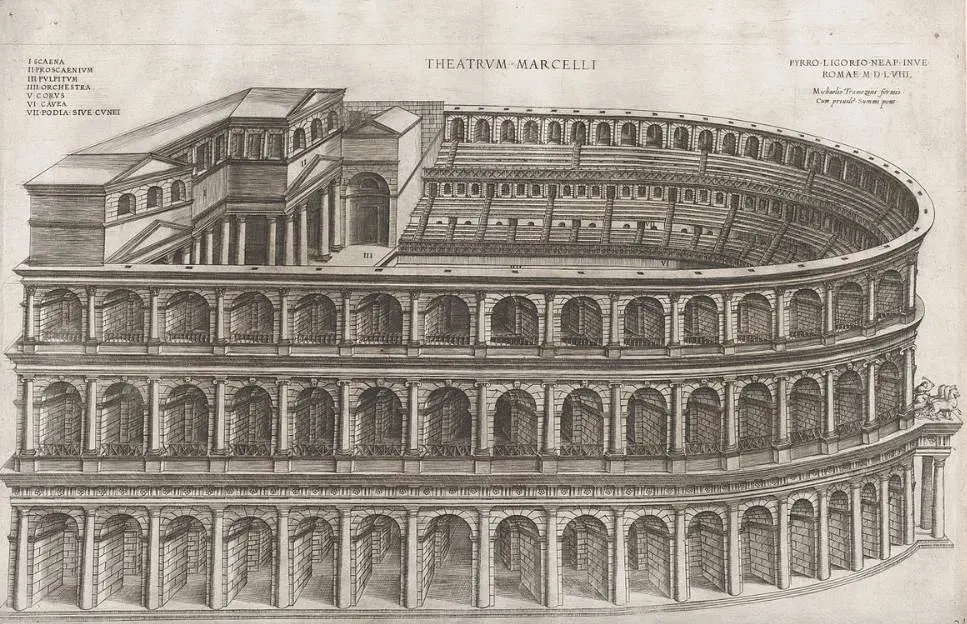
5. The building marked an important moment in ancient Roman architecture
The building was constructed with tuff and concrete and was faced with small stones. The pattern of these building blocks that faced the raw concrete was known as “opus reticulatum.”
It’s hard to judge how the theater looked in ancient times, but we do know that it was completely covered with white travertine stones. The exterior looked pretty amazing, that’s for sure.
The most important fact about the Theatre of Marcellus regarding its architecture is that it features arches that were constructed using fired Roman bricks.
It was one of the first buildings in the Roman Empire to use these. Many of the most monumental structures in ancient Rome were constructed using this type of brick and concrete.
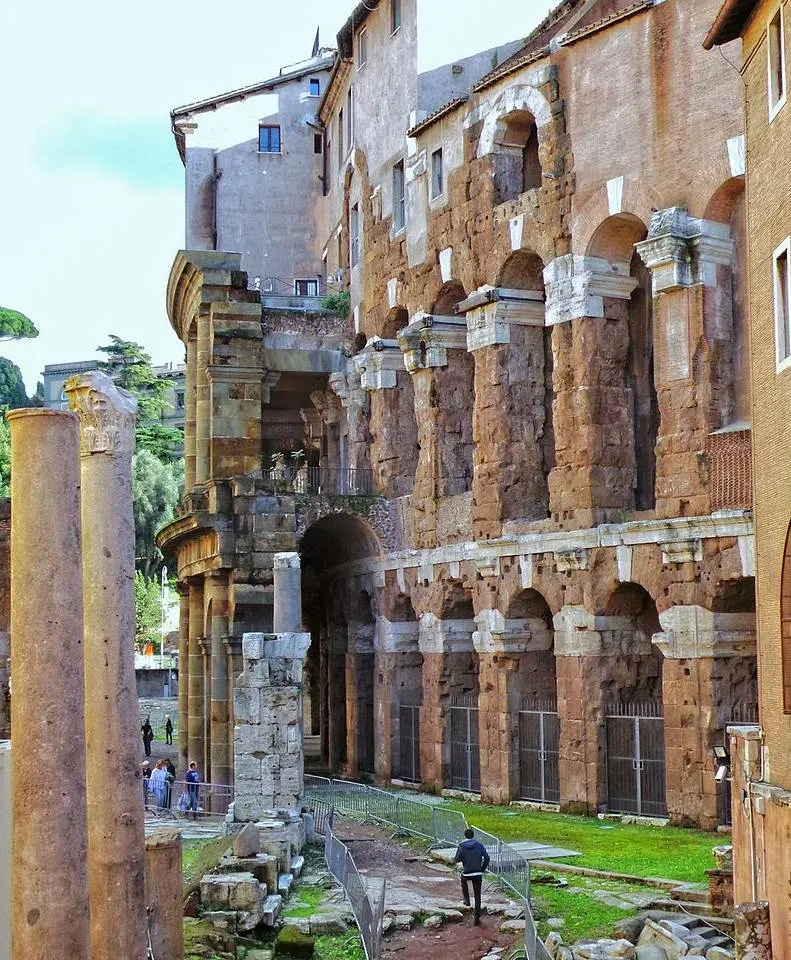
6. The third tier was renovated and completed during the Middle Ages
The theatre was active for drama performances for multiple centuries. In the late 4th century, the crumbling building was used as a quarry for other buildings, including the construction of the Pons Cestius, a bridge in Rome.
It was subsequently used as a residential area and as a fortress during the Middle Ages by several prominent Roman families. By then, the building was known as “Templum Marcelli.”
If you look closely at the different levels, you can see that the upper story clearly differed from the lower sections. Only the first two levels are ancient, the upper floor is medieval.

7. It served as the inspiration for a 17th-century theater in England
Many ancient Roman buildings served as the inspiration for structures that were built hundreds of years later. These weren’t merely Neoclassical buildings as well.
One of the most famous English architects in history was Sir Christopher Wren (1632-1723), the man who designed St. Paul’s Cathedral in London.
He stated that he was inspired by the Theatre of Marcellus when he designed the Sheldonian Theatre in Oxford, a structure that was completed between 1664 and 1669.
This Grade I listed building is still used for a variety of purposes today, including musical performances, lectures, and university ceremonies.
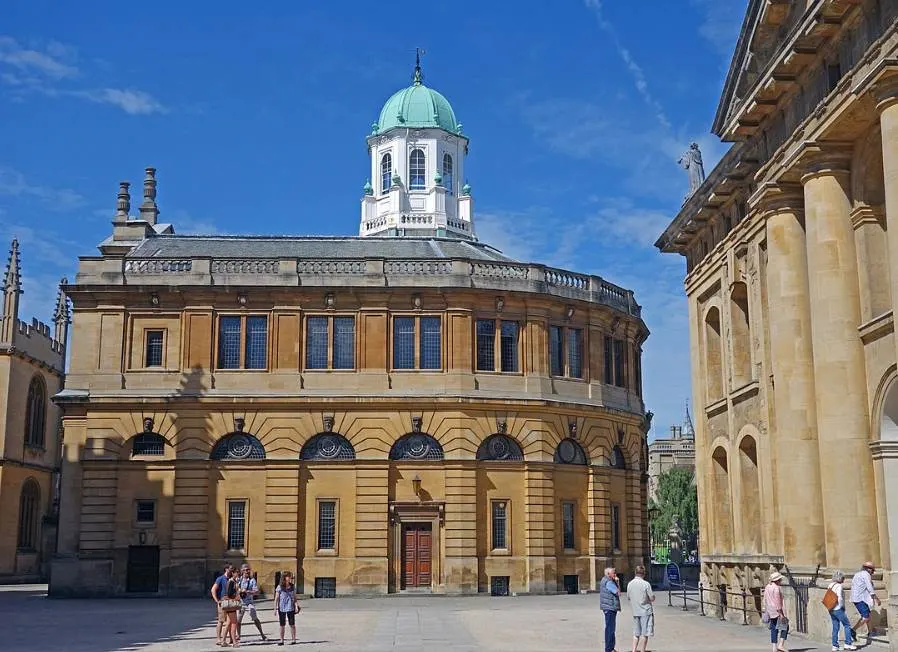
8. The upper floors serve as apartments and concerts are held here every Summer
Nothing of the former seating area remains today because its stones were used for other projects over the centuries.
The Orsini family constructed their residence on top of the ruins of this part of the ancient complex in the 16th century. This building is now used as the Embassy of the Sovereign Military Order of Malta to the Holy See.
Today, the area around the theater is still used for small-scale concerts and the upper floor of the building features apartments.
The Theatre of Marcellus remains, however, a fascinating ancient monument in central Rome that provides great insight into ancient Roman building techniques.
